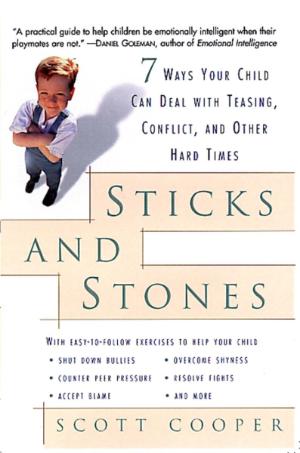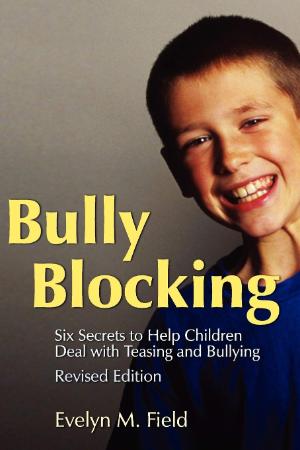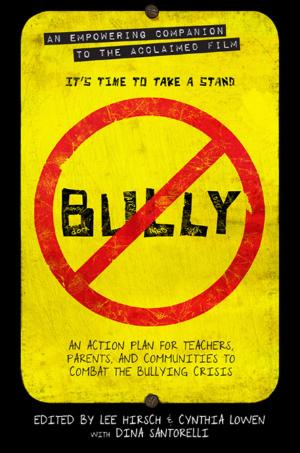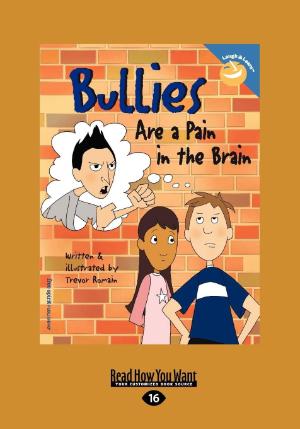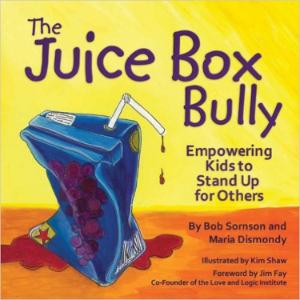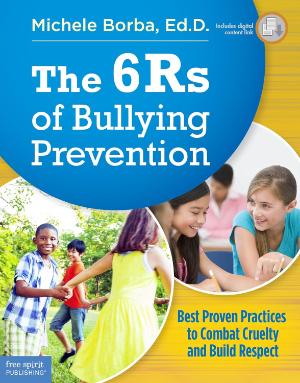
Bullying can take many forms: spreading rumors, name-calling, exclusion, threats, or physical aggression. But it’s not the same as a one-time conflict or hurtful comment. All children will sometimes be teased or feel left out. True bullying is intentional, repeated abuse of power, aimed at causing harm.
Why Do Kids Bully?
Because it gives them power. Every human needs to feel powerful in their lives. When children don’t have access to healthy sources of power—like autonomy, mastery, and connection—they may seek it in unhealthy ways. If a child feels powerless or emotionally overwhelmed, bullying can feel like a way to gain control.
In fact, many children who bully are themselves hurting. They've often been humiliated, threatened, or mistreated—and they displace those feelings onto someone else. Unfortunately, then, kids who are hurting often hurt other kids.
Can You Bully-Proof Your Child?
Unfortunately, no. There will always be people who are hurting and lash out, and your child's path will sometimes cross with theirs. All children will sometimes encounter peers who misuse power. And it’s developmentally normal for kids to experiment with power dynamics, especially before they’ve fully developed empathy.
Your goal isn’t to shield your child from every instance of unkindness, but to help them develop the skills to respond with confidence—and to reach out when they need help.
The Bigger Picture: Culture, Schools, and the Online World
Bullying can begin as early as preschool and often intensifies in middle school. Depending on the study, 40% to 80% of middle schoolers admit to participating in bullying at some point, so clearly our culture bears some responsibility for the pervasiveness of bullying. Many describe themselves as both victims and aggressors. That tells us something important: bullying is often systemic, not just individual.
Punishment doesn’t work. Research shows that:
Restorative justice circles, conflict resolution training and transforming the culture of a school have all been proven to be more effective approaches to reduce bullying than targeting bullies with punishment.
Unfortunately, our school cultures are still struggling to implement effective approaches, and the situation is getting worse in many communities.
And now, with social media, bullying can follow children home—eroding their sense of safety even in their own bedrooms. Tragically, we've seen rising rates of anxiety, depression, and even suicide linked to cyberbullying.
Recent research shows that long-term consequences of bullying include higher risk for depression, anxiety, PTSD, substance abuse and self-destructive behavior.
That's the bad news. But there's good news:
You can help your child develop the resilience and skills to stand up to bullying behavior, and you can keep him from becoming a bully. Here's how.
1. Model compassionate, respectful relationships from the start.
“If children have been accustomed from the start to having their world respected, they will have no trouble later in life recognizing disrespect... and will rebel against it on their own.” —Alice Miller, Thou Shalt Not Be Aware
Children learn how relationships work by watching how we treat them—and others. If you use power over your child, they learn to either use power over others, or allow others to use power over them. Research shows that physical punishment is strongly linked to later bullying behavior. Instead, model respectful communication and set limits with empathy. That’s how children learn that relationships don’t require domination or submission—and that they deserve to be treated with dignity.
If you spank, your child will learn that physical violence is the way to respond to interpersonal problems. Research has repeatedly established that physically disciplining a child is associated with more bullying behaviors.
In fact, any discipline methods that use power over a child teach him to use power over others, or to let others use power over him. Punishment is often perceived by children as adults using force to get their way, which teaches them that bullying is okay. Don't worry, you don't need that kind of discipline. For compassionate discipline that works, see the section on Peaceful Discipline on this website.
2. Stay connected to your child through thick and thin.
Lonely kids are more likely to be bullied. And kids are often ashamed that they're being bullied, so they are hesitant to tell their parents. If your child knows that you will always listen, and that you have their back, they are more likely to talk with you about things that upset them.
How do you make sure that your child would tell you if they were being bullied? Connection is the foundation. It’s the 80% that makes the other 20% of guidance stick. When your child feels seen and supported, they’re more likely to talk to you—and more likely to believe in their own self-worth.
3. Model confident, respectful assertiveness with others.
If you lose your temper and curse out other drivers, even from the privacy of your own car, you're teaching your child that sometimes it's okay to disrespect other people. Conversely, if you tend to back down easily so you don't make a scene, but then later seethe silently, your child is learning those strategies too. Show your child what healthy assertiveness looks like: calm, clear, respectful communication—even when you disagree.
4. Directly teach your child respectful self-assertion.
Kids need to know they can get their needs met while being respectful of other people. Give your child simple, powerful scripts they can use in everyday life::
- "It's my turn now."
- "Hey, stop that."
- "Hands off my body."
- "It's not okay to hurt."
- "I don't like being called that. I want you to call me by my name."
5. Build Social Skills Through Play and Coaching.
Bullies often target kids who seem isolated or unsure. If your child has social challenges, support them in building confidence—not by pushing them into uncomfortable situations, but by practicing together. Roleplay joining games, navigating playground dynamics, or introducing themselves. Observe how your child interacts with peers, and offer gentle coaching. For instance, kids who are successful in joining groups of kids usually observe first, and find a way to fit into the group, rather than just barging in, so your child might need to practice this.
Most importantly, help them listen to their own inner guidance about which friendships feel safe and respectful. Sometimes kids want peer acceptance so much that they continue to hang around a group of peers even when one of the group leaders begins to mistreat them. If you suspect your child might be vulnerable, listen to what he says about peer interactions to help him learn to check in with his own inner wisdom, and work to provide healthy relationship opportunities for him.
6. Teach your child how the dynamics of bullying work.
Teach your child that bullies are testing for a reaction. If the aggression gives the bully what he's looking for -- a feeling of power from successfully pushing the other child's buttons -- the aggression will generally escalate. But if the "target" stays calm, the bully often loses interest.
So teach your child that since every bully is looking for a reaction, the more they can stay calm, more likely the bully will stop their provocation. It's imperative to discuss this issue with every child BEFORE they might be subject to bullying, so they can stand up for themselves successfully when a bully first "tests" them. When children understand the why behind bullying behavior, they can respond without taking it personally—and without reacting in ways that escalate the situation.
7. Practice with roleplays so that your child feels comfortable responding to teasing and provocations.
Roleplay with your child how he can stand up to a bully. Point out to your child that the bully wants to provoke a response that makes the bully feel powerful, so showing emotion and fighting back are exactly what the bully feeds off. Explain that while your child can't control the bully, he can always control his own response. So in every interaction, how he responds will either inflame the situation or defuse it. Your child needs to avoid getting "hooked" no matter how mad the bully makes him.
The best strategy is always to maintain one's own dignity, and to let the "bully" maintain his dignity -- in other words, to keep your dignity while withdrawing from the situation, and not to attack or demean the other person. Coach your child to stand tall, make eye contact, use a strong voice, and say something calm like:
- "You know, I’m just going to ignore that comment."
- "I think I have something else to do right now."
- "No thank you."
Then, just walk away.
Remind them: they can’t control the bully’s behavior, but they can control their own response. Teach your child to count to ten to stay calm, look the bully in the eye, and say one of these things. Practice until your child has a strong, self-assured tone.
8. When your child first begins to use technology, teach, supervise, and stay involved.
Bullying on Social Media is not so different from bullying in person; it is still an abuse of power. But there are some differences. Kids who wouldn't be likely to engage in unkindness to someone's face may be able to ignore the impact of their actions online, and thus may find it harder to resist bullying.
When your child first begins to use social media, review it with them daily. Keep an attitude of curiosity, support and humor. Ask your child how they felt about their various interactions, what was hard, how they decided what to do. Children develop good judgment from interactions where they have a chance to safely reflect on the choices they made, and what happened.
Ask questions like:
- “What was fun about your online time today?”
- “Did anything feel confusing or upsetting?”
- “What would you do differently next time?”
Also teach concrete cyber safety:
- Never share your passwords, even with friends.
- Review privacy settings regularly with your parents.
- Do not share anything that could hurt or embarrass anyone.
- Never forward anything that could be hurtful.
- Being kind to others online will help to keep you safe.
- Remember that being mean online or forwarding hurtful messages is just like being mean or spreading hurtful rumors or embarrassing someone in person.
- Always come to a parent right away if something online makes you uncomfortable.
The good news about bullying via technology is that you have a record. So if your child does get bullied online:
- Document everything with screenshots and dates.
- Block the person.
- Report it to the school, with documentation.
For more on teaching kids to take care of themselves online, see: Cyber Smarts: Keeping Your Child Safe Online
9. Remove Shame: Walking Away Is Brave
Teach your child that there is no shame in being frightened by a bully, in walking away, or in telling an adult and asking for help. Bullying situations can escalate, and saving face is less important than staying safe.
10. Teach kids to intervene to prevent bullying when they see it.
Bullying expert Michele Borba says that when bystanders -- kids who are nearby -- intervene correctly, studies find they can stop bullying more than half the time and within 10 seconds.
Empower your child to be a defender, not a bystander.
The best interventions:
Partner with the victim and remove her from danger - Go stand with the victim physically, turn the victim away from the bully and walk her off in the other direction -- towards adult help. Say "You look upset" or "I've been looking for you" or "The teacher sent me to find you."
Get help - Bullies love an audience. Get the other kids on your side by waving them over to you, yelling, "We need your help." Confront the bully: "You're being mean." Then walk away: "C'mon, let's go!"
And of course, if you're at all worried about safety, shout for a teacher or dial 911 on a cell phone.
11. Teach your child basic bully avoidance.
Bullies operate where adults aren't present, so if your child has been bullied, she should avoid unsupervised hallways, bathrooms, and areas of the playground. Sitting in the front of the school bus, standing in the front of the line, and sitting at a lunch table near the cafeteria chaperones are all good strategies for bully avoidance.
12. Don't hesitate to intervene.
Your job as the parent is to protect your child. That means that in addition to teaching your child to stick up for herself, you may well need to call the teacher or principal. Even if your child begs you not to tell the school, document everything and advocate fiercely. Emotional bullying and exclusion can be just as damaging as physical aggression. If the school doesn’t take it seriously, escalate. Consider requesting a safety plan, transferring schools, or homeschooling if necessary.
Strategies for Kids to Fend Off Bullying
Talking with Teens and Preteens about Bullying
Using Play to Help a Child Who Has Been Bullied, Bossed
Additional Resources
Parents often ask me for good books to read that address bullying. Here are some suggestions both for you and your child.
For Parents:
For Children:
For social skills, I also recommend Lonnie Michelle's How Kids Make Friends: Secrets for Making Lots of Friends, No Matter How Shy You Are (link below).


